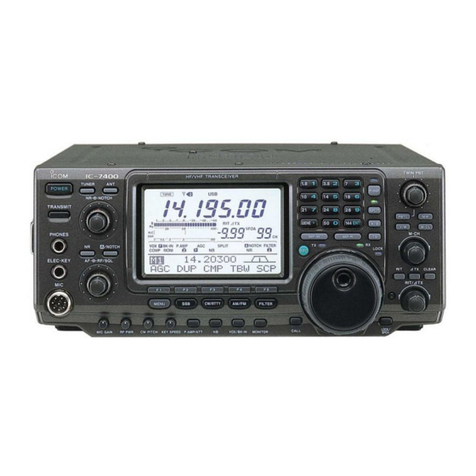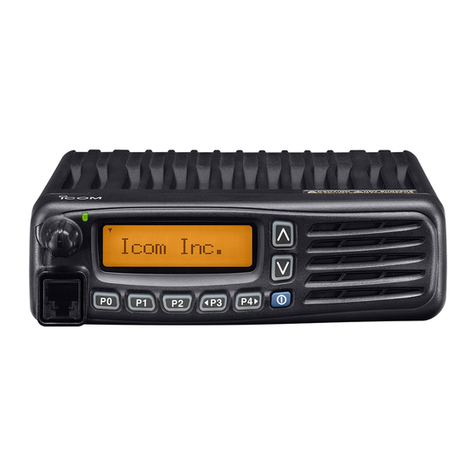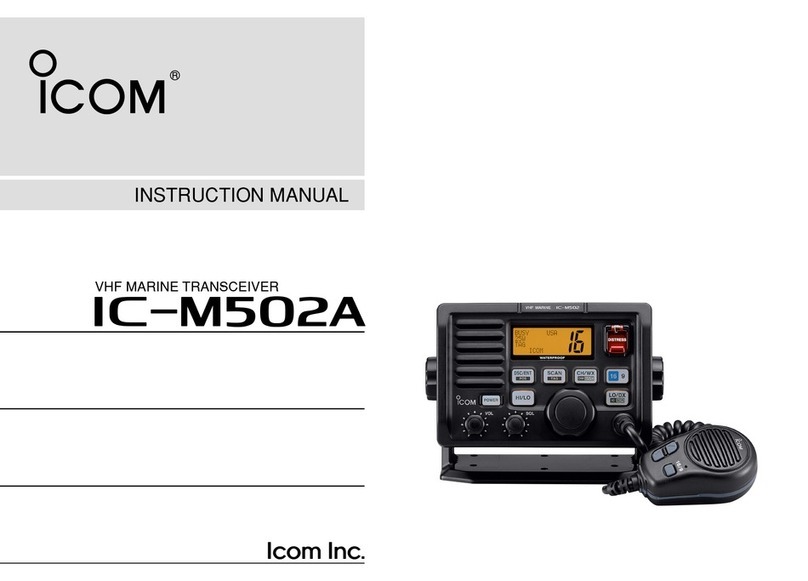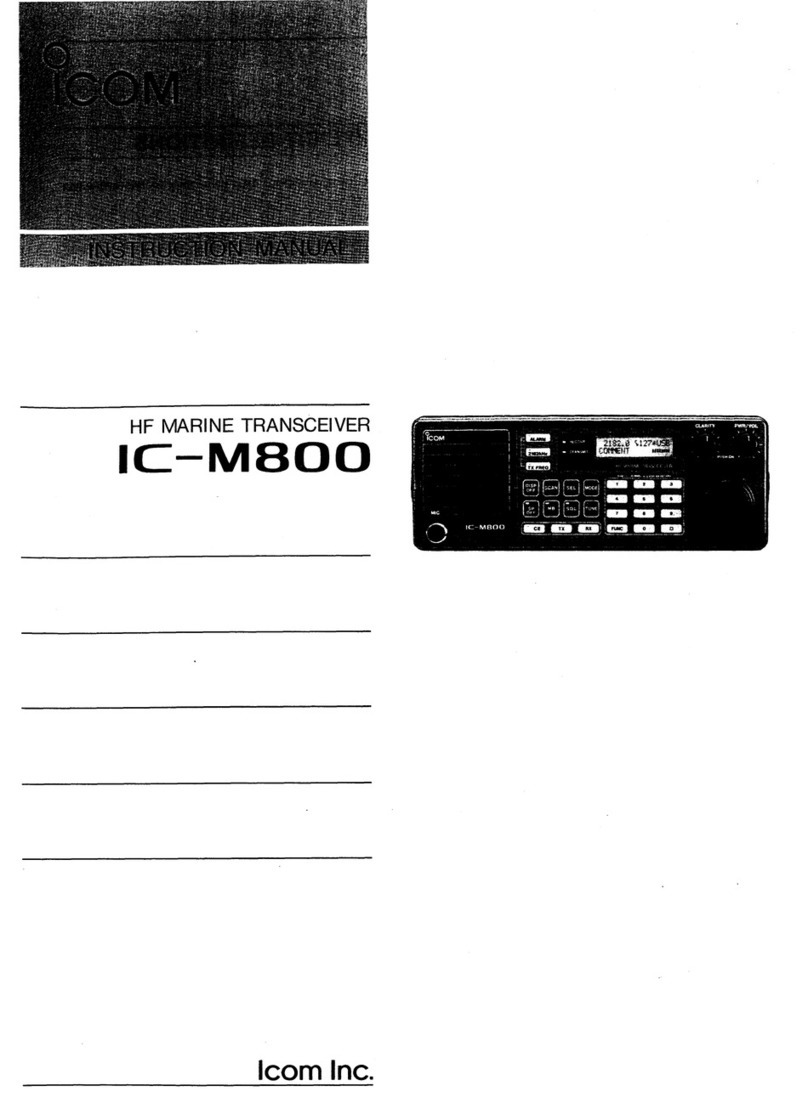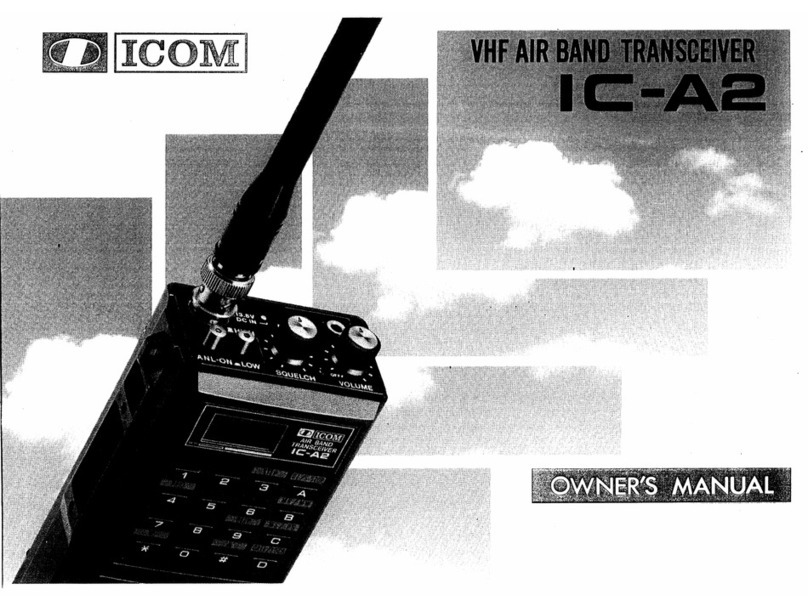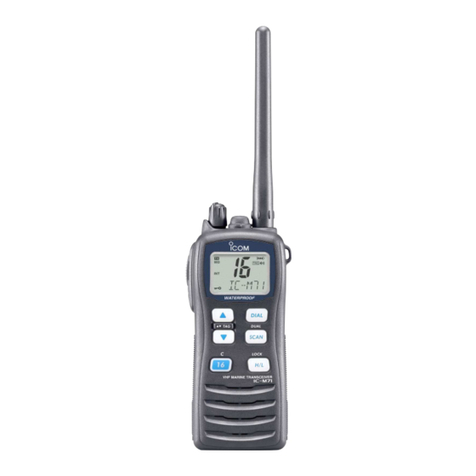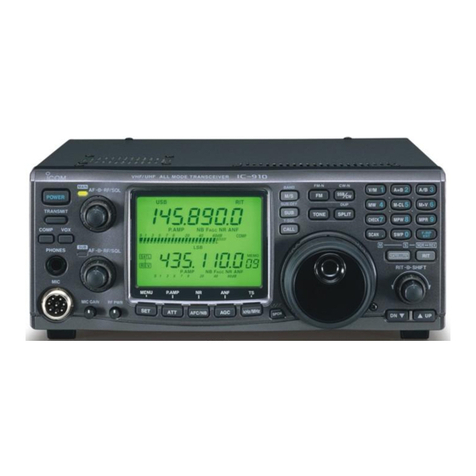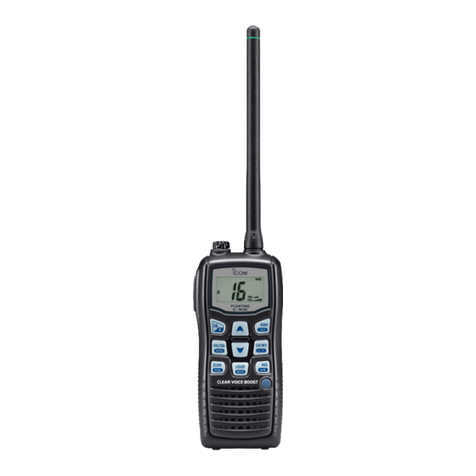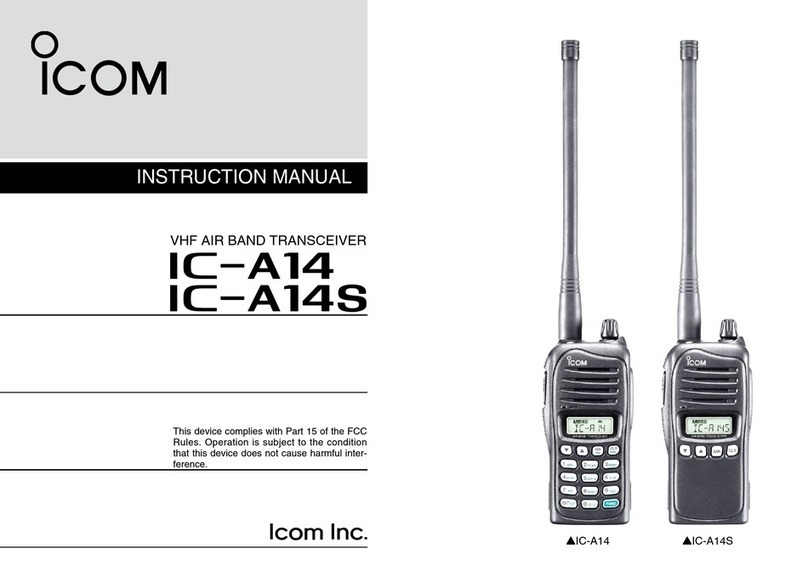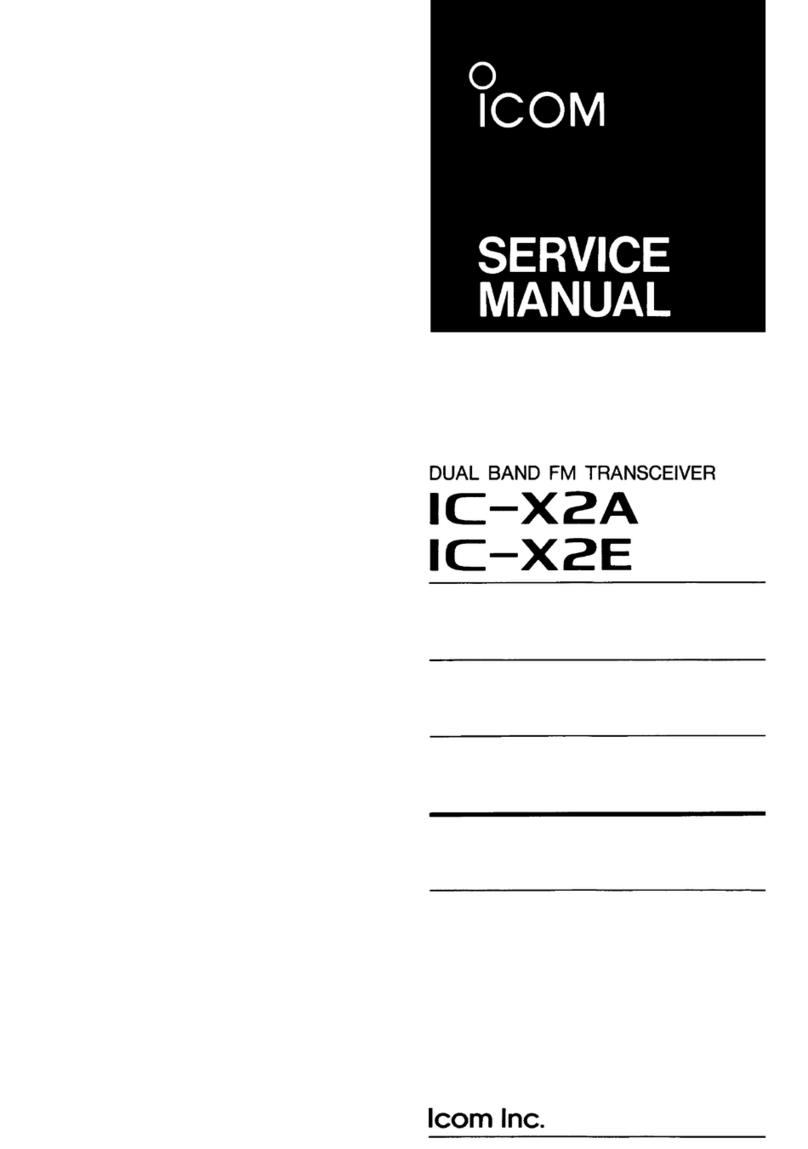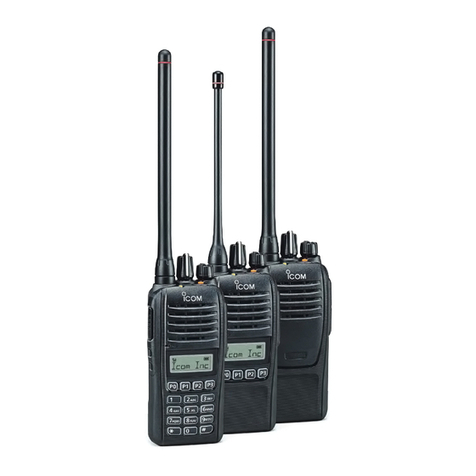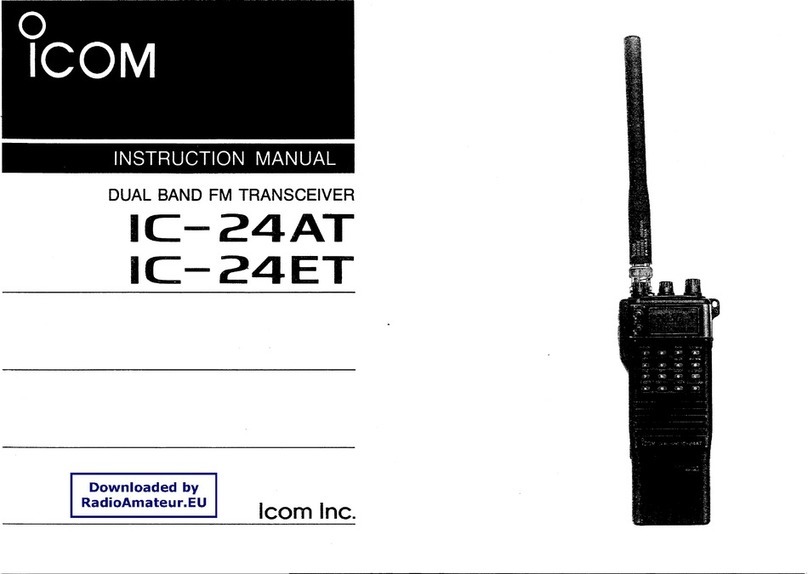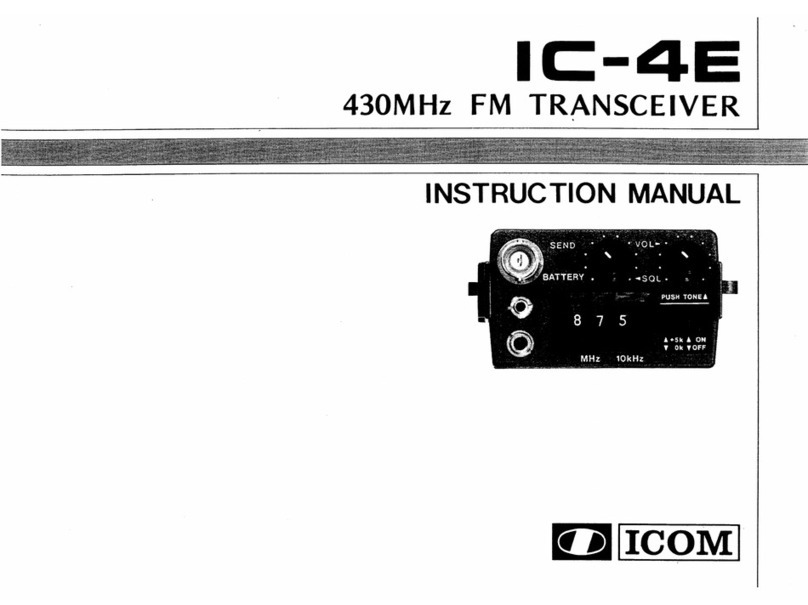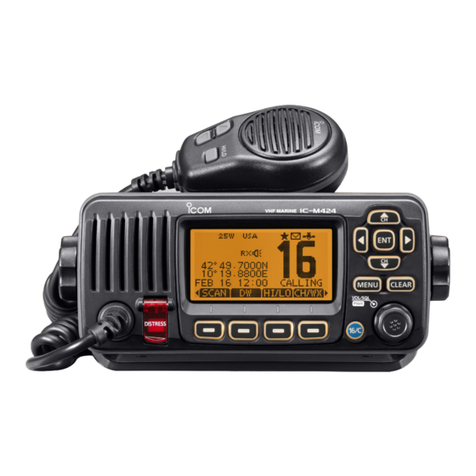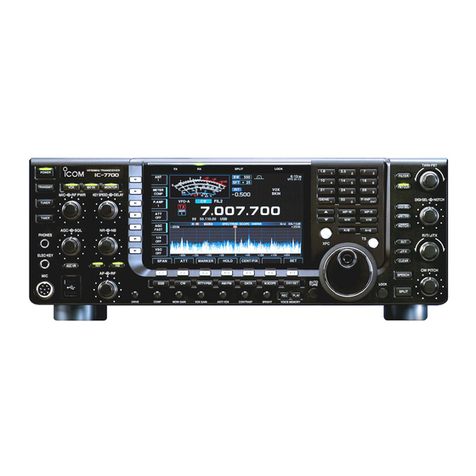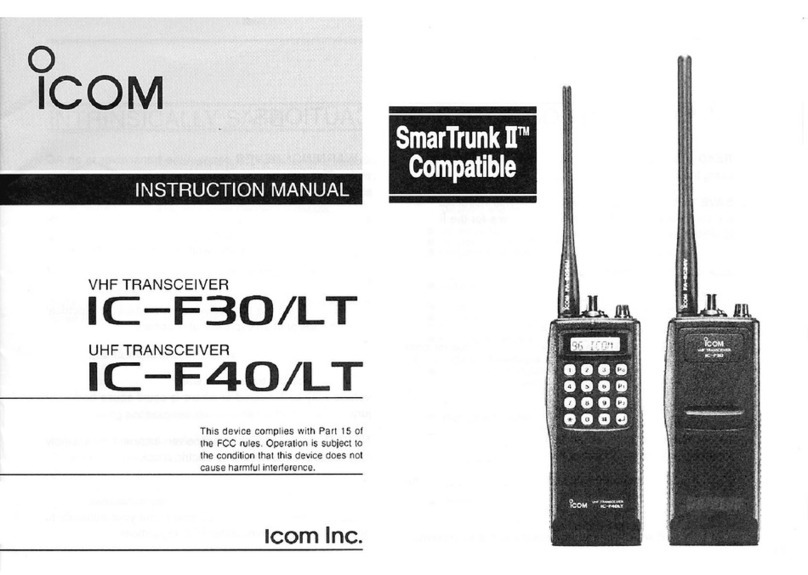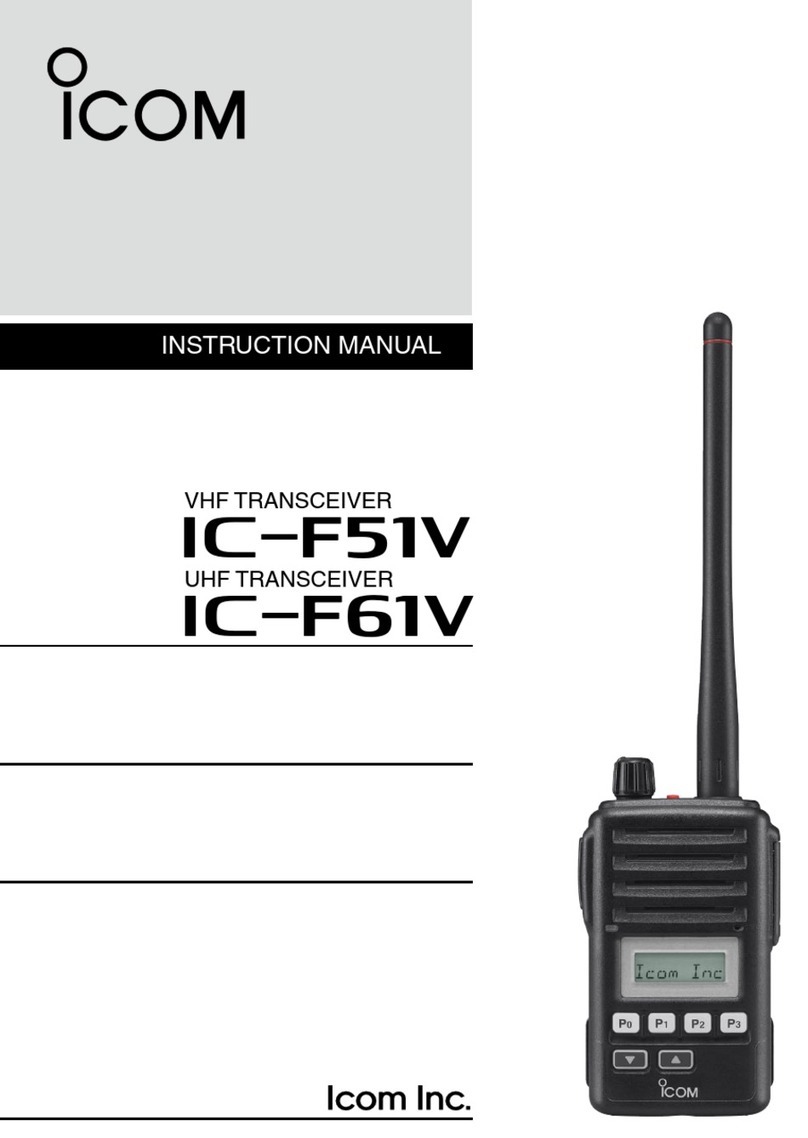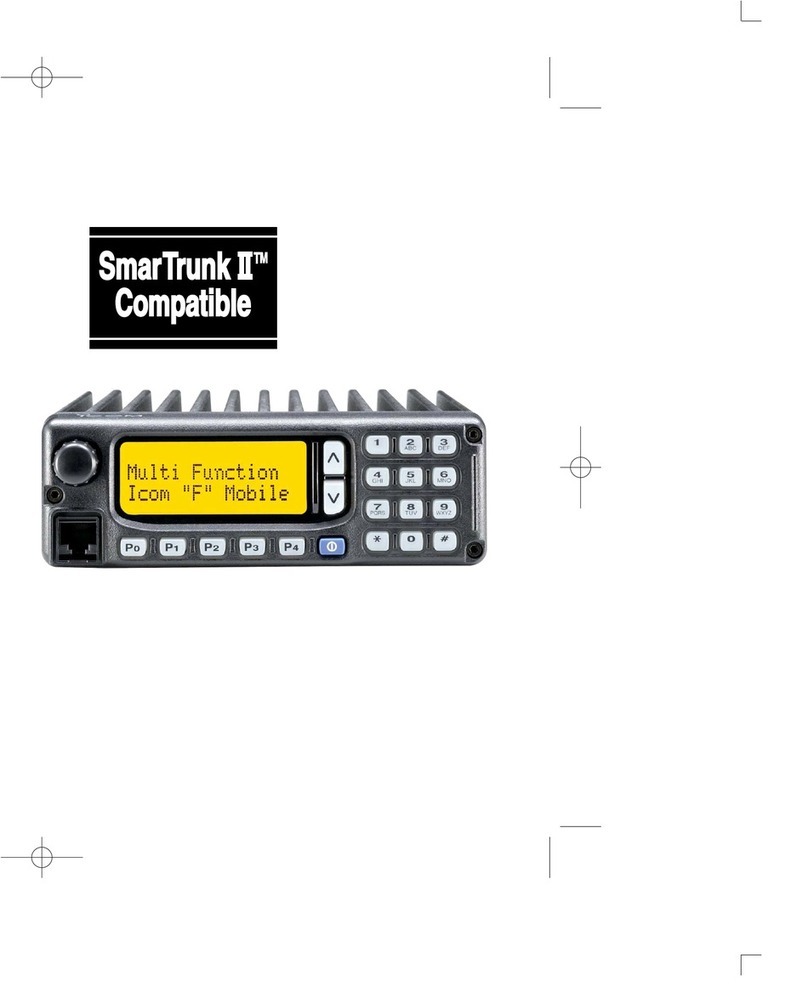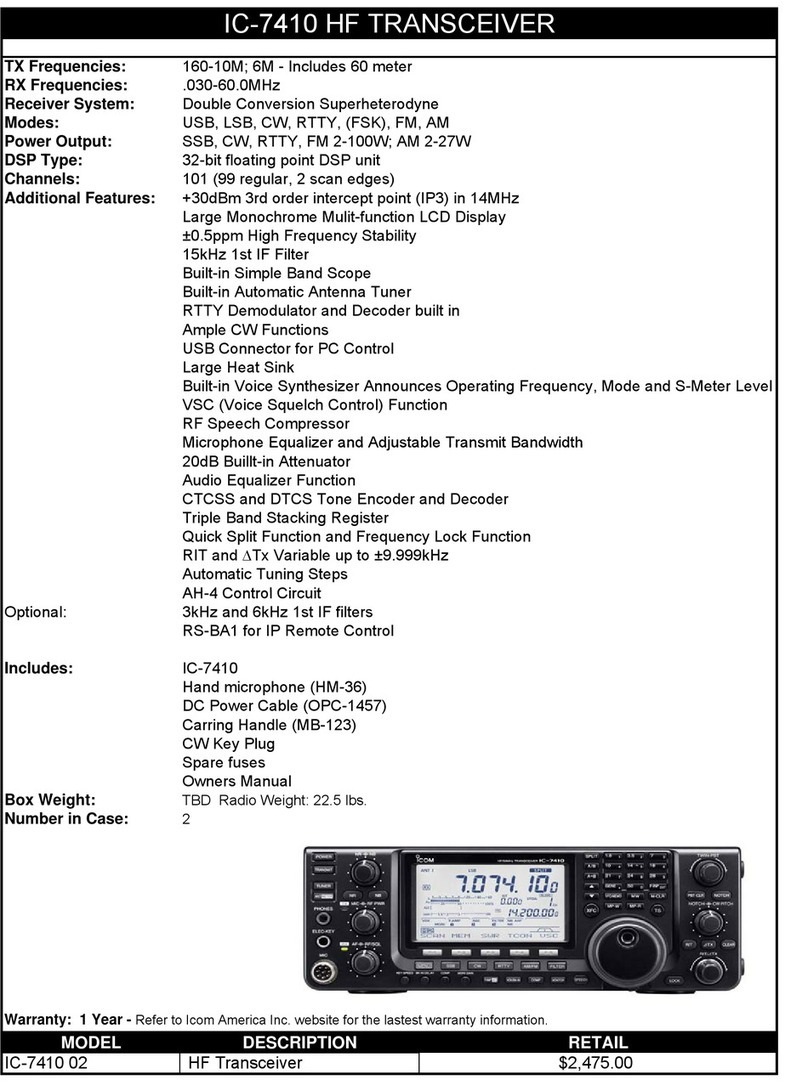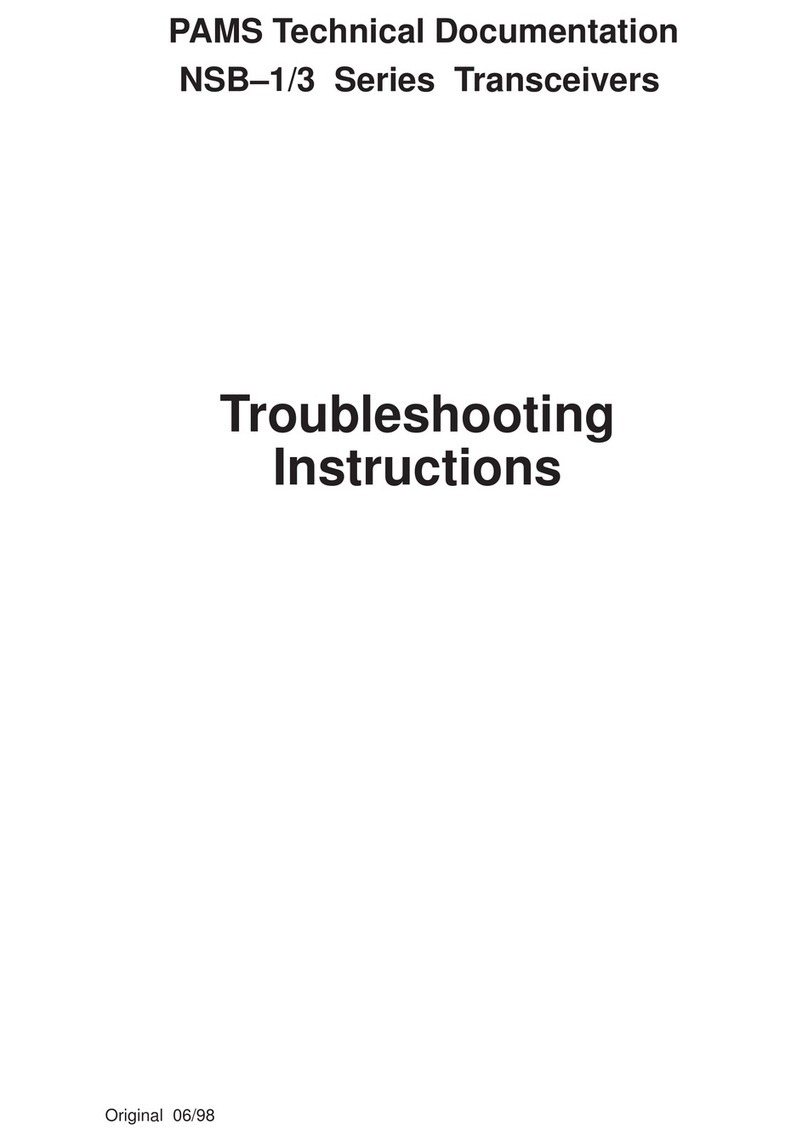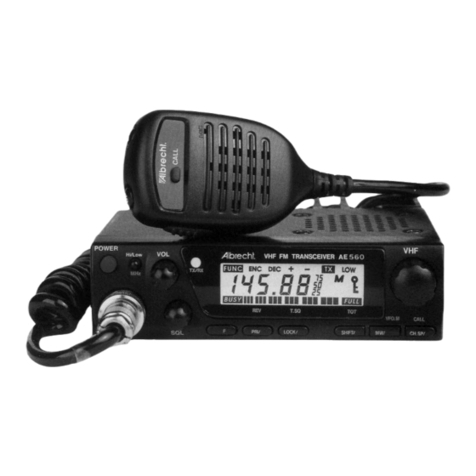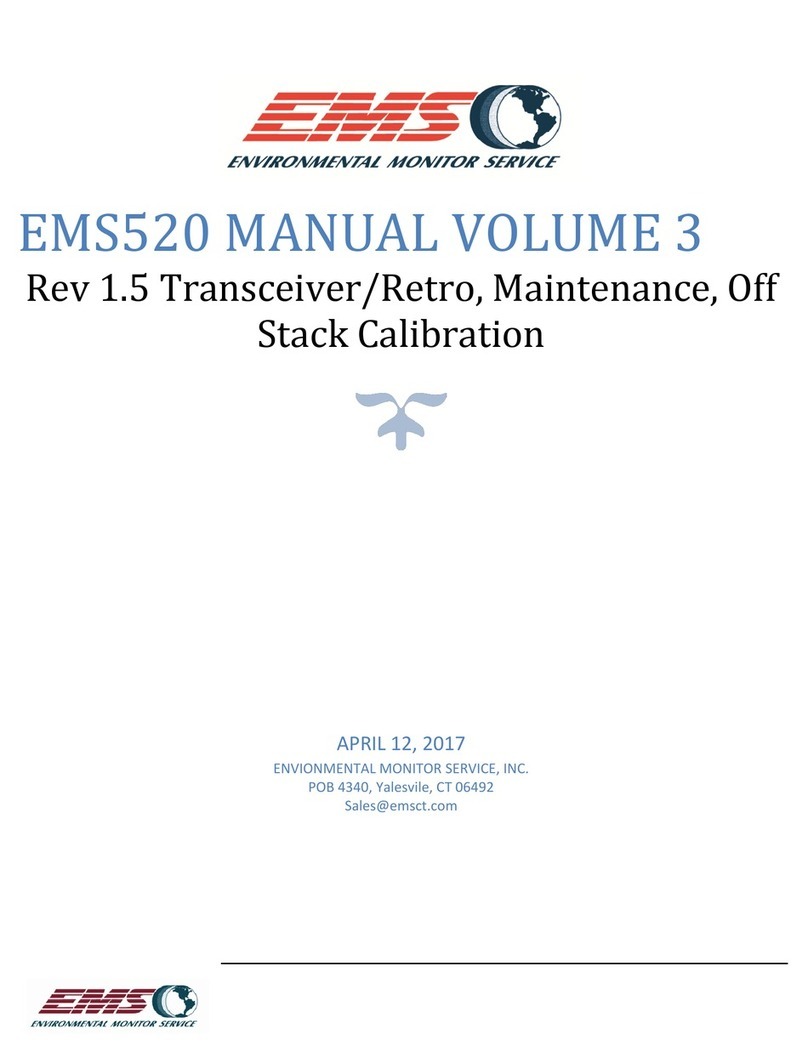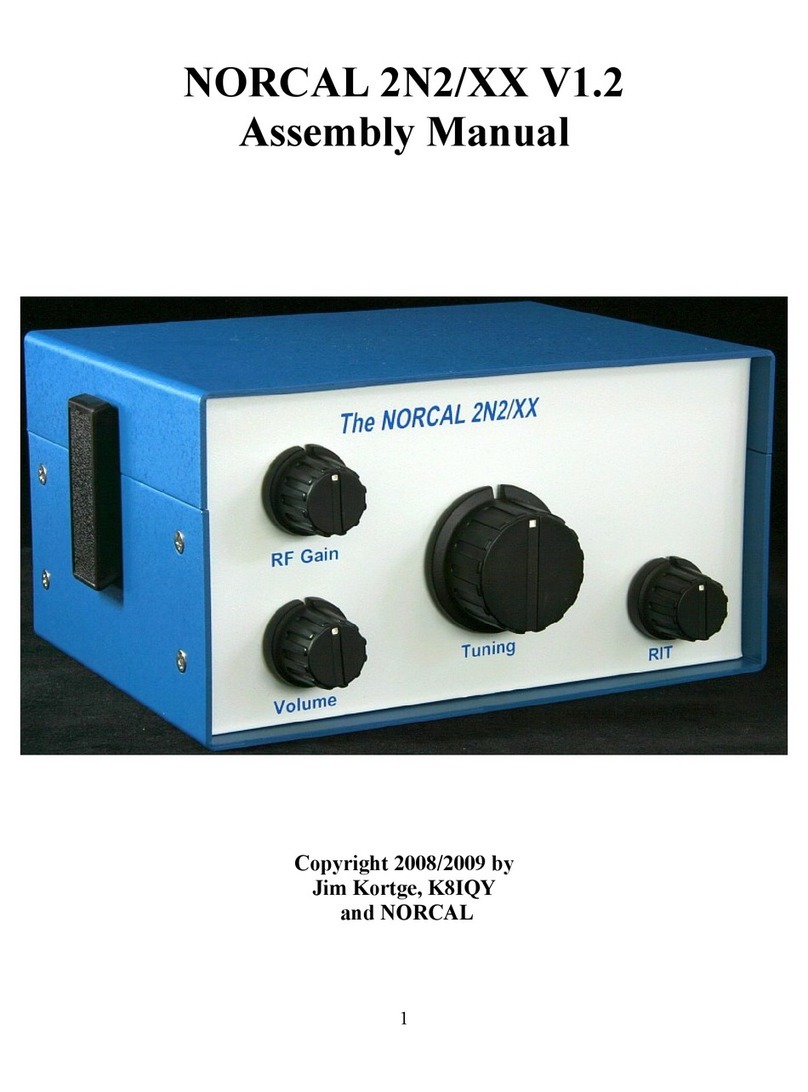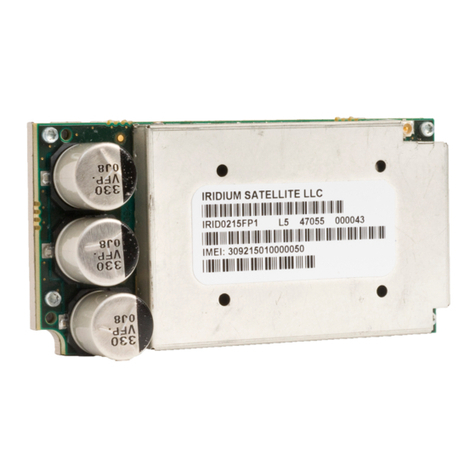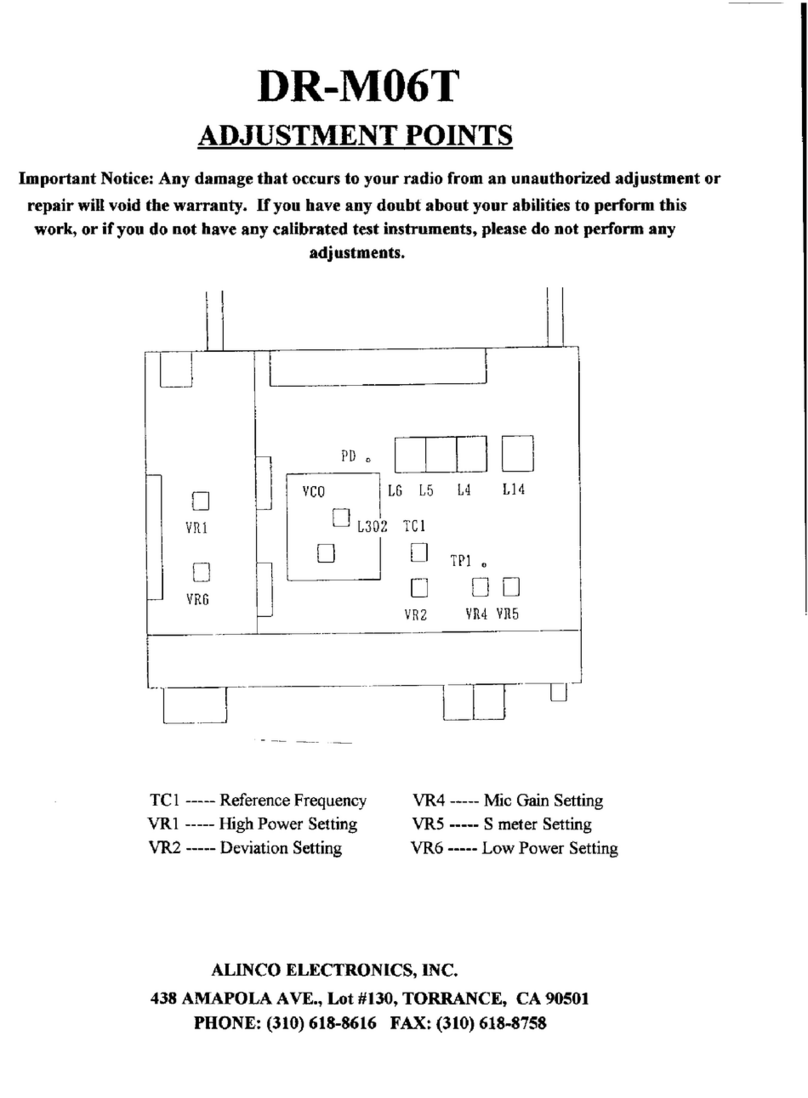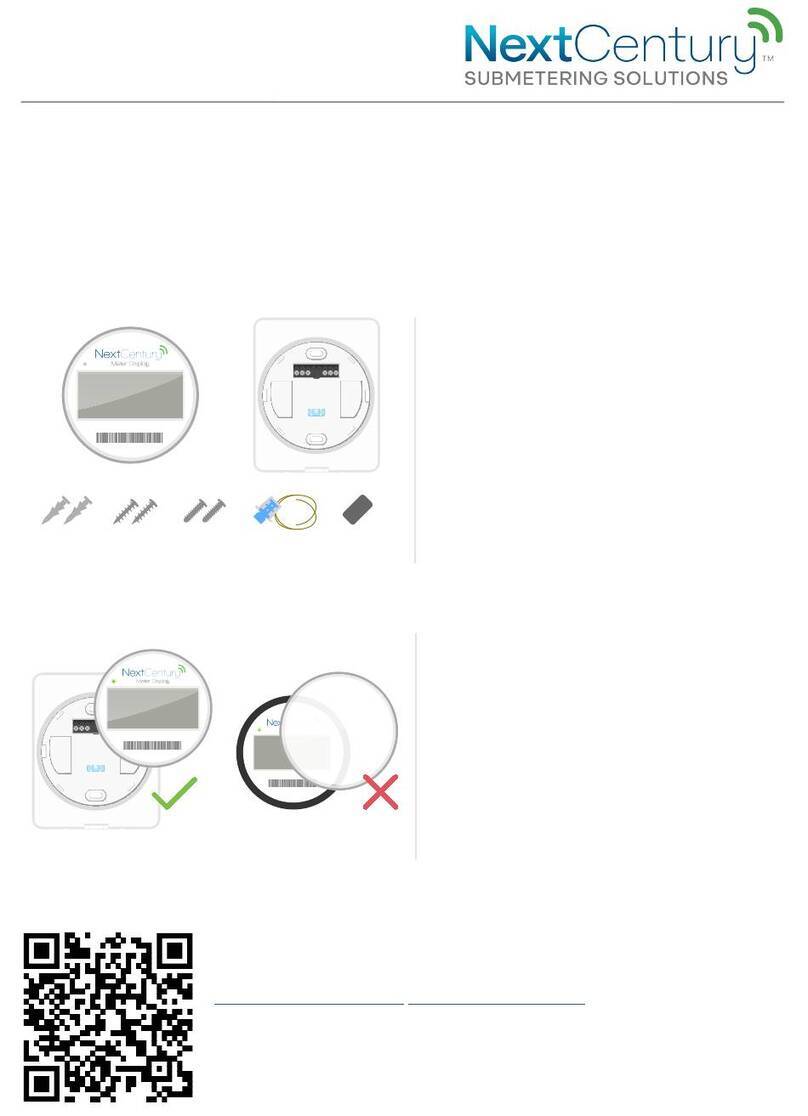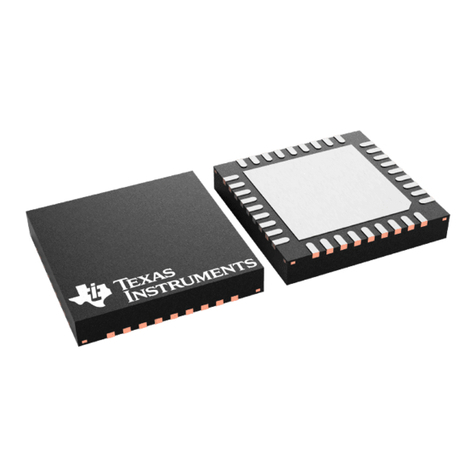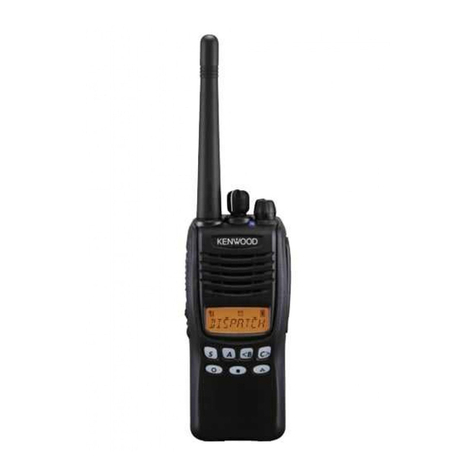Icom IC-V3500 Setup guide

i
Thank you for choosing this Icom product. This product is designed and built with Icom’ s state of the art
technology and craftsmanship. With proper care, this product should provide you with years of trouble-
free operation.
ABOUT THE MANUALS (As of April 2022)
You can use the following manuals to understand and operate this transceiver.
•Basic Manual (Comes with the transceiver)
Instructions for basic operations.
•Marine Channel Mode Guide (Comes with the transceiver)
Instructions for the Marine Channel mode and the related functions in English.
LThis guide may not be included, depending on the transceiver version.
•Advanced Manual (This manual)
Instructions for advanced operations in English.
For Reference
•HAM Radio Terms (PDF type)
A glossary of HAM radio terms in English.
TRADEMARKS
Icom and the Icom logo are registered trademarks of Icom Incorporated (Japan) in Japan, the United States, the
United Kingdom, Germany, France, Spain, Russia, Australia, New Zealand, and/or other countries.
Adobe, Acrobat, and Reader are either registered trademarks or trademarks of Adobe Systems Incorporated in the
United States and/or other countries.
All other products or brands are registered trademarks or trademarks of their respective holders.

ii
FUNCTIONS AND FEATURES OF ADOBE®ACROBAT®READER®
The following functions and features can be used with Adobe®Acrobat®Reader®.
• Keyword search
Click “Find (Ctrl+F)” or
“Advanced Search (Shift+Ctrl+F)”
in the Edit menu to open the
search screen.
This is convenient when
searching for a particular word
or phrase in this manual.
LThe menu screen may differ,
depending on the Adobe Acrobat
Reader version.
Click to open the find or search
screen or advanced search screen.
• Printing out the desired pages.
Click “Print” in the File menu, and then select the
paper size and page numbers you want to print.
LThe printing setup may differ, depending on the printer.
Refer to your printer’s instruction manual for details.
LSelect “A4” size to print out the page in the original
manual size.
• Read Out Loud feature.
The Read Out Loud feature reads aloud the text in
this PDF.
Refer to the Adobe Acrobat Reader Help for the
details.
(This feature may not be usable, depending on your
PC environment including the operating system.)
LThe screen may differ, depending on the Adobe Acrobat Reader version.
• Find screen
• Advanced search screen

1-1
Section 1ADVANCED OPERATIONS
Emergency Call function..............................................................1-2
DAssigning the Emergency Call function to [BANK OPT].................1-2
DSetting the Emergency frequency ..................................................1-2
DSetting the Emergency alert volume ..............................................1-2
DUsing the Emergency Call function ................................................1-3
DReceiving an Emergency signal .....................................................1-4
Temporary Volume function ......................................................... 1-5
DAssigning the Temporary Volume function to [BANK OPT] ............1-5
DSetting the Temporary Volume .......................................................1-5
DUsing the Temporary Volume function............................................1-5

1-2
1. ADVANCED OPERATIONS
The Emergency Call function is used when you are in
an urgent situation.
When the function is ON, an Emergency signal is
transmitted to let the other stations and people know
that you require assistance, and an alarm sounds
from the internal speaker.
You can also receive the Emergency signal from other
stations.
DAssigning the Emergency Call
function to [BANK OPT]
1. While holding down [SET LOCK], hold down [ ]
for 1 second to enter the Initial Set mode.
2. Repeatedly push [SET LOCK] or [MONI ANM PA]
to select “OK” ([BANK OPT] key).
3. Rotate [DIAL] to select “EMR.”
4. Push [ ] to save and exit the Initial Set mode.
DSetting the Emergency frequency
1. While holding down [SET LOCK], hold down [ ]
for 1 second to enter the Initial Set mode.
2. Repeatedly push [SET LOCK] or [MONI ANM PA]
to select “EM” (Emergency channel).
3. Rotate [DIAL] to select a channel.
LEmpty channels will not be displayed.
4. Push [ ] to save and exit the Initial Set mode.
DSetting the Emergency alert volume
1. While holding down [SET LOCK], hold down [ ]
for 1 second to enter the Initial Set mode.
2. Repeatedly push [SET LOCK] or [MONI ANM PA]
to select “EV” (Emergency Alert volume).
3. Rotate [DIAL] to select the options.
LSee page 8-7 for details.
4. Push [ ] to save and exit the Initial Set mode.
Emergency Call function
LOCK
S
E
T
ANM
MONI
DIGITAL PRIO AO BUSY
MUTE
NAR
MID
LOW
When “EMR” (Emergency) is selected in the
[BANK OPT] key item.
LOCK
S
E
T
ANM
MONI
DIGITAL PRIO AO BUSY
MUTE
NAR
MID
LOW
When “VFO” (VFO frequency) is selected in the
Emergency channel item.
LOCK
S
E
TMONI
DIGITAL PRIO AO BUSY
MUTE
NAR
MID
LOW
The Emergency Alert volume item

1-3
1. ADVANCED OPERATIONS
Emergency Call function
Hold down [BANK OPT] for 3 seconds.
When an Emergency signal is transmitted
Displayed
The Emergency frequency is displayed.
The S/RF indicator is displayed.
The Memory icon, Skip icon, and Memory channel
number display will follow the channel set as the
Emergency frequency.
DUsing the Emergency Call function
IMPORTANT: When another function is assigned to
[BANK OPT], the Emergency Call function cannot be
used.
1. Confirm that no Emergency signal is being received.
2. Hold down [BANK OPT] for 3 seconds until 6 short
countdown beeps and 1 long beep sound.
• The channel will change to the one set as an
Emergency frequency, and an Emergency signal will
be transmitted.
• An Emergency alert sounds at the level set in the
Emergency alert volume setting.
LThe alert and transmitting the signal last for 10 seconds.
3. After transmitting the Emergency signal, the
audio from the surrounding area is automatically
transmitted for 10 seconds, and you can explain
your situation.
4. Wait for an answer signal.
LYou can also transmit an audio signal by holding
down [PTT].
LAfter 5 seconds have passed since receiving the
signal, or no signal is received for 10 seconds,
the transceiver will sound an Emergency alert and
transmit an Emergency signal again.
NOTE: The countdown beeps and the long beep,
the Emergency alert, and the received answer signal
come from the internal speaker, speaker jack, or
both, depends on the setting of AF output selection.
See 8-8 for details.
TIP:
When the function is turned ON:
• All keys cannot be used except for [ ] and
[BANK OPT].
• The output power level is automatically set to
“High.” (When the function is turned OFF, it will be
set back to the original power level.)
• The Weather Alert function will be turned OFF.
• When “MIN” is selected in the Emergency alert
volume setting, the countdown beeps and the long
beep, and the Emergency alert will not sound.
The Emergency signal cannot be transmitted when:
• The Emergency frequency is out of the selected
amateur radio band.
• The transmission is inhibited due to high internal
temperatures.
The Emergency signal can be transmitted, even if:
• The TX Inhibit setting is set to “Inhibit.”
• The Repeater Lockout function is turned ON.
• The Time-out timer function is turned ON.
To turn OFF the Emergency Call function:
• Hold down [BANK OPT] for 3 seconds again.
• Turn OFF the transceiver, and then turn it ON again.

1-4
1. ADVANCED OPERATIONS
Emergency Call function
Hold down for 3 seconds.
The function display blinks, and the received
Emergency signal will sound.
Using the HM-133V
1. Confirm that no Emergency signal is being received.
2. Hold down [BANK/OPTION] for 3 seconds until 6
short countdown beeps and 1 long beep sound.
• The channel will change to the one set as an
Emergency frequency, and an Emergency signal will
be transmitted.
• An Emergency alert sounds at the level set in the
Emergency alert volume setting.
LThe alert and transmitting the signal last for 10 seconds.
3. After transmitting the Emergency signal, the
audio from the surrounding area is automatically
transmitted for 10 seconds, and you can explain
your situation.
4. Wait for an answer signal.
LYou can also transmit an audio signal by holding
down [PTT].
LAfter 5 seconds have passed since receiving the
signal, or no signal is received for 10 seconds,
the transceiver will sound an Emergency alert and
transmit an Emergency signal again.
NOTE: The countdown beeps and the long beep,
the Emergency alert, and the received answer signal
come from the internal speaker, speaker jack, or
both, depends on the setting of AF output selection.
See 8-8 for details.
DReceiving an Emergency signal
When an Emergency signal is received:
• The received Emergency signal will sound at the
level set in the Emergency alert volume setting.
• The function display blinks.
• If a scan is activated, it will stop.
• If the Priority watch is activated, it will stop in the
operating mode that the signal is received.
zAfter receiving the signal, you can transmit an
answer by holding down [PTT].
NOTE: Even if another function is assigned to
[BANK OPT], the transceiver will receive an
Emergency alert. However, the volume level will not
change, and the function display will not blink.
TIP:
• When “MIN” is selected in the Emergency alert
volume setting, the received Emergency signal will
not sound.
• The Weather Alert function keeps being turned
ON, even if an Emergency signal is received.
• If any operation is performed while receiving the
signal, the volume level will be set back to the
original level, and the function display blinking will
be stopped.
For the next 10 minutes, the volume level will not
be changed, even if the signal is received again.
Only the function display will blink.

1-5
1. ADVANCED OPERATIONS
You can set a specific volume level between 0 and 32.
Once [BANK OPT] is pushed, the volume level is
changed to the set value.
DAssigning the Temporary Volume
function to [BANK OPT]
1. While holding down [SET LOCK], hold down [ ]
for 1 second to enter the Initial Set mode.
2. Repeatedly push [SET LOCK] or [MONI ANM PA]
to select “OK” ([BANK OPT] key).
3. Rotate [DIAL] to select “TVo.”
4. Push [ ] to save and exit the Initial Set mode.
DSetting the Temporary Volume
1. While holding down [SET LOCK], hold down [ ]
for 1 second to enter the Initial Set mode.
2. Repeatedly push [SET LOCK] or [MONI ANM PA]
to select “TV” (Temporary volume).
3. Rotate [DIAL] to set the volume level.
4. Push [ ] to save and exit the Initial Set mode.
NOTE: You can use the function as “One-Touch Mute”
by setting volume at level 0.
DUsing the Temporary Volume function
IMPORTANT: When another function is assigned to
[BANK OPT], this function cannot be used.
zPush [BANK OPT].
• The volume level is changed to the set value.
• “VOL” and the changed volume level is displayed.
LPush [BANK OPT] again to go back to the original level.
LTo turn the function ON or OFF using the HM-133V,
push [BANK/OPTION].
TIP: Changing the volume level when the function
is turned ON
• When rotating [VOL], the function is turned OFF,
and the volume level is changed to the value
corresponding to the [VOL] level.
•
TONE-1]
on the HM-133V is pushed, the function is turned
OFF, and the volume level goes up or down from
the set value.
Temporary Volume function
LOCK
S
E
T
ANM
MONI
DIGITAL PRIO AO BUSY
MUTE
NAR
MID
LOW
When “TVo” (Temporary Volume/Option) is selected in
the [BANK OPT] key item.
The Temporary volume item
Push [BANK OPT].
The changed volume level is displayed.
“VOL” is displayed.
S
E
T
ANM
MONI
AO
NAR
MID
LOW

2-1
Section 2REPEATER OPERATION
FM Repeater operation................................................................2-2
Accessing a repeater................................................................... 2-2
D1750 Hz tone (Using the HM-133V) ...............................................2-3
Frequency Offset .........................................................................2-4
Repeater Lockout ........................................................................2-4
Reversed Duplex function ........................................................... 2-5
Auto Repeater function................................................................ 2-5
DSetting the Auto Repeater function ON/OFF ..................................2-5
DFrequency range and offset direction.............................................2-5
Subaudible tones......................................................................... 2-6
DTone information.............................................................................2-6

2-2
2. REPEATER OPERATION
1. Set the receive frequency in the VFO mode.
NOTE for only the USA version:
When the Auto Repeater function is set to “R1,”
steps 2 and 3 are not necessary.
When the function is set to “R2,” steps 2 to 4 are
not necessary.
See page 8-5 for details.
2. Set the frequency offset in the Set mode.
LSee page 8-2 for details.
3. Hold down [LOW DUP] for 1 second once or twice
to select the plus Duplex or the minus Duplex
mode.
• A “+” or “–” is displayed, depending on the frequency
offset direction.
4. Repeatedly push [TONE T-SCAN] to turn ON
the subaudible tone encoder, depending on the
repeater requirements.
• “ ” is displayed.
LThe 88.5 Hz tone frequency is set as the default.
When a different tone frequency is needed to access
a repeater, see page 2-6 for setting the tone
frequency.
5. Hold down [PTT] to transmit.
• The displayed frequency is automatically changed to
the transmit frequency.
• When “OFF” is displayed, confirm that the frequency
offset is correctly set. (p. 8-2)
6. Release [PTT] to receive.
7. Push [MONI ANM PA] to check whether or not
you can directly receive the signal from the other
station.
LThe transmit frequency is displayed.
8. To return to the Simplex mode, hold down
[LOW DUP] for 1 second once or twice.
• A “–” or “+” disappears.
9. To turn OFF the subaudible tone encoder,
repeatedly push [TONE T-SCAN] until “ ”
disappears.
LOCK
S
E
T
ANM
MONI
DUP
LOW
T-SCAN
TONE
PRIO
M/CALL
SCAN
V/MHz
DIGITALPRIO AO BUSY
MUTE
NAR
MID
LOW
LOCK
S
E
T
ANM
MONI
DUP
LOW
T-SCAN
TONE
PRIO
M/CALL
SCAN
V/MHz
DIGITALPRIO AO BUSY
MUTE
NAR
MID
LOW
LOCK
S
E
T
ANM
MONI
DUP
LOW
T-SCAN
TONE
PRIO
M/CALL
SCAN
V/MHz
DIGITALPRIO AO BUSY
MUTE
NAR
MID
LOW
Accessing a repeater
A “-” is displayed.
“” is displayed.
Hold down [LOW DUP] for 1 second to select the
minus Duplex mode.
Repeatedly push [TONE T-SCAN] to turn ON the
subaudible tone encoder.
The displayed frequency is
automatically changed to
the transmit frequency.
FM Repeater operation
A Repeater receives signals on one frequency and
then retransmits them on a different frequency.
When using a Repeater, the transmit frequency is
shifted from the receive frequency by a frequency
offset.
A Repeater can be accessed using the Duplex
function by setting the transceiver’s offset to the same
value as the Repeater’s offset.
Repeater
Station A Station B
TX:
RX:
144.900 MHz
145.500 MHz
TX:
RX:
144.900 MHz
145.500 MHz
TX:
RX:
145.500 MHz
144.900 MHz
Example: Select the minus Duplex mode, and then
turn ON the subaudible tone encoder.
LOCK
S
E
T
ANM
MONI
DUP
LOW
T-SCAN
TONE
PRIO
M/CALL
SCAN
V/MHz
DIGITALPRIO
AO BUSY
MUTE
NAR
MID
LOW
Hold down [PTT] to transmit.
The frequency goes back to
the receive frequency while
receiving.

2-3
2. REPEATER OPERATION
Using the HM-133V
1. Set the receive frequency (repeater output frequency).
2. Set the frequency offset in the Set mode.
3. Push [DUP- 7 TONE] or [DUP+ 8 TSQL ] to
select the minus Duplex or the plus Duplex mode.
• A “+” or “–” is displayed.
4. Push [FUNC] then [DUP- 7 TONE] to turn ON
the subaudible tone encoder, depending on the
repeater requirements.
• “ ” is displayed.
LThe 88.5 Hz tone frequency is set as the default.
When a different tone frequency is needed to access
a repeater, see page
2-6
for setting the tone
frequency.
5. Hold down [PTT] to transmit.
• The displayed frequency is automatically changed to
the transmit frequency.
• When “OFF” is displayed, confirm that the frequency
offset is correctly set. (p. 8-2)
6. Release [PTT] to receive.
7. Push [MONI 1 ANM] to check whether or not
you can directly receive the signal from the other
station.
LThe transmit frequency is displayed.
8. Push [SIMP 9 TSQL] to return to the Simplex
mode.
• A “+” or “–” disappears.
9. To turn OFF the subaudible tone encoder, push
[FUNC], and then [ENT C T-OFF].
Push , and then to turn
ON the subaudible tone encoder.
Accessing a repeater
Push or to select the
plus Duplex or the minus Duplex
mode.
Push return to the Simplex
mode.
D1750 Hz tone (Using the HM-133V)
A 1750 Hz tone is required to access many European
Repeaters.
To send a 1750 Hz tone for 1 second
z
TONE-1].
To continuously send a 1750 Hz tone
z
L
Push , and then or
hold down .

2-4
2. REPEATER OPERATION
When communicating through a repeater, the transmit
frequency is shifted up or down from the receive
frequency.
1. Push [SET LOCK] to enter the Set mode.
2. Repeatedly push [SET LOCK] or [MONI ANM PA]
until the “±” and the frequency offset are displayed.
3. Rotate [DIAL] to set the desired frequency offset.
• Push [V/MHz SCAN] to change the frequency step
between 1 kHz and 1 MHz.
4. Push any key other than [SET LOCK] or
[MONI ANM PA] to save the selection and exit the
Set mode.
Using the HM-133V
1. Push [SET B D-OFF] to enter the Set mode.
2. Repeatedly push [SET B D-OFF] or
[ENT C T-OFF] until the “±” and the frequency
offset are displayed.
3.
• The frequency cannot be directly entered using the
keypad.
4. Push [CLR A MW] to save the selection and exit
the Set mode.
LOCK
S
E
T
ANM
MONI
DUP
LOW
T-SCAN
TONE
PRIO
M/CALL
SCAN
V/MHz
DIGITALPRIO AO BUSY
MUTE
NAR
MID
LOW
The Repeater Lockout item
[SET LOCK]
[]
Frequency Offset
Repeater Lockout
This function helps prevent interference to other
stations by inhibiting transmitting when a signal is
received.
The transceiver has two inhibiting conditions, “RP”
(repeater) and “BU” (busy).
1. Hold down [ ] for 1 second to turn OFF the
transceiver.
2. While holding down [SET LOCK], hold down [ ]
for 1 second to enter the Initial Set mode.
3. Repeatedly push [SET LOCK] or [MONI ANM PA]
to select “RLO” (Repeater Lockout).
4. Rotate [DIAL] to set the Repeater Lockout function
option to “RP,” “BU,” or “OF.”
• “OF”: The Repeater Lockout function is OFF.
• “RP”: Transmit is inhibited when a signal with an
unmatched subaudible tone is received.
• “BU”: Transmit is inhibited when a signal is received.
5. Push [ ] to save and exit the Initial Set mode.
LOCK
S
E
T
ANM
MONI
AO
MUTE
NAR
MID
LOW
The Frequency offset item

2-5
2. REPEATER OPERATION
When the Reversed Duplex function is ON, the
receive frequency shifts. (The transmit frequency
shifts in normal Duplex mode.) An example receive
and transmit frequency are shown in the table below
with the following settings:
Input frequency: 145.30 MHz
Offset direction: – (Negative)
Offset frequency: 0.6 MHz
Function OFF ON
RX frequency 145.30 MHz 144.70 MHz
TX frequency 144.70 MHz 145.30 MHz
1. Push [SET LOCK] to enter the Set mode.
2. Repeatedly push [SET LOCK] or [MONI ANM PA]
to select “REV” (Reverse mode).
3. Rotate [DIAL] to turn the function ON or OFF.
4. Push any key other than [SET LOCK] or
[MONI ANM PA] to save and exit the Set mode.
Using the HM-133V
1. Push [SET B D-OFF] to enter the Set mode.
2. Repeatedly push [SET B D-OFF] or
[ENT C T-OFF] to select “REV.”
3.
4. Push [CLR A MW] to save and exit the Set mode.
LOCK
S
E
T
ANM
MONI
DUP
LOW
T-SCAN
TONE
PRIO
M/CALL
SCAN
V/MHz
DIGITALPRIO AO BUSY
MUTE
NAR
MID
LOW
LOCK
S
E
T
ANM
MONI
DUP
LOW
T-SCAN
TONE
PRIO
M/CALL
SCAN
V/MHz
DIGITALPRIO AO BUSY
MUTE
NAR
MID
LOW
The duplex icon blinks
when the function is ON.
The Auto Repeater item
Reversed Duplex function
Auto Repeater function
NOTE: This function is only for the USA version.
The USA version automatically activates the repeater
settings (DUP– or DUP+ and tone encoder ON/OFF)
when the operating frequency falls within the general
repeater output frequency range and deactivates them
when outside of the range.
DSetting the Auto Repeater function
ON/OFF
1. Push [ ] to turn OFF the transceiver.
2. While holding down [SET LOCK], hold down [ ]
for 1 second to enter the Initial Set mode.
3. Repeatedly push [SET LOCK] or [MONI ANM PA]
to select “RPT” (Auto Repeater).
4. Rotate [DIAL] to select an option from “R1,” “R2,”
or “OF.”
• “OF”: The function is OFF.
• “R1”: The function is ON, but the tone encoder
is OFF.
• “R2”: Both the function and tone encoder are
ON.
5. Push [ ] to exit the Initial Set mode.
DFrequency range and offset direction
Frequency range Duplex direction
145.200 ~ 145.495 MHz A “-” is displayed.
146.610 ~ 146.995 MHz A “-” is displayed.
147.000 ~ 147.395 MHz A “+” is displayed.
The Reversed mode item
LOCK
S
E
T
ANM
MONI
DIGITAL PRIO AO BUSY
MUTE
NAR
MID
LOW

2-6
2. REPEATER OPERATION
Some repeaters require subaudible tones to access.
Subaudible tones are superimposed over your normal
signal and must be set in advance.
1. Set the operating frequency.
2. Push [SET LOCK] to enter the Set mode.
3. Repeatedly push [SET LOCK] or [MONI ANM PA]
to select “ ” and “rt” (Repeater Tone frequency).
4. Rotate [DIAL] to select the desired frequency.
5. Push any key other than [SET LOCK] or
[MONI ANM PA] to save and exit the Set mode.
Using the HM-133V
1. Set the operating frequency.
LThe subaudible tone frequency or code can be
independently set for each Memory channel, Call
channel, and the VFO mode.
2. Push [SET B D-OFF] to enter the Set mode.
3. Repeatedly push [SET B D-OFF] or
[ENT C T-OFF] to select “ ” and “rt” (Repeater
Tone frequency).
4.
L
frequencies.
5. Push [CLR A MW] to save and exit the Set mode.
DTone information
Some repeaters require a different tone system to be
accessed.
DTMF codes
You can enter and transmit a DTMF code or manually
transmit a DTMF tone.
See pages 6-2 and 6-4 for details.
DTCS codes
The DTCS encoder superimposes the selected DTCS
code over your transmitted signal.
See page 7-8 for details.
LSee the CTCSS tone or DTCS code. (p. 7-2)
NOTE:
• If you do not know the subaudible tone or DTCS
code used for a repeater, the tone scan is
convenient for detecting it. See page 7-7 for
details.
• The subaudible tone frequency can be temporarily
set in a Memory or Call channel. However,
when another Memory channel or VFO mode is
selected, the set frequency is deleted. To save the
tone frequency, overwrite the channel setting.
The Repeater Tone frequency item
Selectable Repeater Tone frequencies (unit: Hz)
Subaudible tones
67.0
69.3
71.9
74.4
77.0
79.7
82.5
85.4
88.5
91.5
94.8
97.4
100.0
103.5
107.2
110.9
114.8
118.8
123.0
127.3
131.8
136.5
141.3
146.2
151.4
156.7
159.8
162.2
165.5
167.9
171.3
173.8
177.3
179.9
183.5
186.2
189.9
192.8
196.6
199.5
203.5
206.5
210.7
218.1
225.7
229.1
233.6
241.8
250.3
254.1
LOCK
S
E
T
ANM
MONI
DIGITAL PRIO AO BUSY
MUTE
NAR
MID
LOW

3-1
MEMORY OPERATIONSection 3
General description ���������������������������������������������������������������������3-2
DMemory channel contents ��������������������������������������������������������������3-2
Selecting a Memory channel ������������������������������������������������������� 3-3
DUsing the tuning dial�����������������������������������������������������������������������3-3
D��������������������������������������������������3-3
D ������������������������������������������������3-3
Selecting a Call channel�������������������������������������������������������������� 3-4
Entering a Memory/Call channel ������������������������������������������������� 3-4
Copying the Memory channel contents ��������������������������������������� 3-6
D ���������������������������������������������������������3-6
DMemory/Call channel to Call/Memory channel�������������������������������3-7
Entering a channel name�������������������������������������������������������������3-8
Deleting a Memory channel������������������������������������������������������� 3-10
Setting a Memory Bank ������������������������������������������������������������� 3-11
Selecting a Memory Bank����������������������������������������������������������3-13
Transferring a Memory channel to another bank����������������������� 3-14
Deleting a Memory Bank ����������������������������������������������������������� 3-16

3-2
3�
General description
NOTE: Memory content may be accidentally
cleared by static electricity, electric transients,
by a malfunction or during repairs� Therefore, we
recommend that you backup the Memory channel
L can also be
used to backup your Memory channel contents� See its
instruction manual for details�
The Memory mode enables you to quickly select
often-used frequencies, modes, and other parameters�
While operating in the Memory mode, you can
temporarily change the operating frequency, mode,
and so on without overwriting the Memory channel
contents�
Group Memory
channel
Descriptions
000 to 199 000 to 199
Up to 100 channels can be
separately saved in the 10
Memory Banks�
Scan edge
The upper and lower
frequencies for the
scanning range (3 pairs)�
Call
channel C
band�
DMemory channel contents
•
•
• Tuning step
• Transmit output power
•
• Duplex direction and offset
• Subaudible tone frequency, tone squelch frequency,
or DTCS code with polarity
• Channel name
•
• Skip setting*
selectable for use by groups�
* Except for Scan edge channels�

3-3
3�
LOCK
S
E
T
ANM
MONI
DUP
LOW
T-SCAN
TONE
PRIO
M/CALL
SCAN
V/MHz
DIGITALPRIO AO BUSY
MUTE
NAR
MID
LOW
LOCK
S
E
T
ANM
MONI
DUP
LOW
T-SCAN
TONE
PRIO
M/CALL
SCAN
V/MHz
DIGITALPRIO AO BUSY
MUTE
NAR
MID
LOW
LOCK
S
E
T
ANM
MONI
DUP
LOW
T-SCAN
TONE
PRIO
M/CALL
SCAN
V/MHz
DIGITALPRIO AO BUSY
MUTE
NAR
MID
LOW
LOCK
S
E
T
ANM
MONI
DUP
LOW
T-SCAN
TONE
PRIO
M/CALL
SCAN
V/MHz
DIGITALPRIO AO BUSY
MUTE
NAR
MID
LOW
LOCK
S
E
T
ANM
MONI
DUP
LOW
T-SCAN
TONE
PRIO
M/CALL
SCAN
V/MHz
DIGITALPRIO AO BUSY
MUTE
NAR
MID
LOW
NOTE:
selected�
DUsing the tuning dial
1�
Memory mode�
• “ ” and the Memory channel number are displayed�
2�
LOCK
S
E
T
ANM
MONI
DUP
LOW
T-SCAN
TONE
PRIO
M/CALL
SCAN
V/MHz
DIGITALPRIO AO BUSY
MUTE
NAR
MID
LOW
LOCK
S
E
T
ANM
MONI
DUP
LOW
T-SCAN
TONE
PRIO
M/CALL
SCAN
V/MHz
DIGITALPRIO AO BUSY
MUTE
NAR
MID
LOW
Selecting a Memory channel
Example: Selecting Memory channel 2.
Memory mode�
“2” is displayed�
to select the Memory mode�
or to select Memory channel 2�
to select the Memory mode�
Example: Selecting Memory channel 2.
Example: Selecting Memory channel 2.
D
1�
• “ ” and the Memory channel number are displayed�
2�
channel�
D
1�
• “ ” and the Memory channel number are displayed�
2�
•
3�
L
to clear and re-enter from the 1st digit�
L
the previous channel�
L
and then push [
“
“ ” and the Memory Channel
number are displayed�
“” and the Memory Channel
number are displayed�
“” and the Memory Channel
number are displayed�
“2” is displayed�
“2” is displayed�
)�

3-4
3�
Selecting a Call channel
The factory default frequency is entered in the Call
channel�
z
channel�
•
L
mode�
NOTE:
Call channel, a small “c” is displayed instead of the
Memory channel number�
z
Call channel�
L
LOCK
S
E
T
ANM
MONI
DUP
LOW
T-SCAN
TONE
PRIO
M/CALL
SCAN
V/MHz
DIGITALPRIO AO BUSY
MUTE
NAR
MID
LOW
Call channel
“C” is displayed�
LOCK
S
E
T
ANM
MONI
DUP
LOW
T-SCAN
TONE
PRIO
M/CALL
SCAN
V/MHz
DIGITALPRIO AO BUSY
MUTE
NAR
MID
LOW
LOCK
S
E
T
ANM
MONI
DUP
LOW
T-SCAN
TONE
PRIO
M/CALL
SCAN
V/MHz
DIGITALPRIO AO BUSY
MUTE
NAR
MID
LOW
LOCK
S
E
T
ANM
MONI
DUP
LOW
T-SCAN
TONE
PRIO
M/CALL
SCAN
V/MHz
DIGITALPRIO AO BUSY
MUTE
NAR
MID
LOW
LOCK
S
E
T
ANM
MONI
DUP
LOW
T-SCAN
TONE
PRIO
M/CALL
SCAN
V/MHz
DIGITALPRIO AO BUSY
MUTE
NAR
MID
LOW
3 beeps sound�
Entering a Memory/Call channel
such as subaudible tone frequency and so on, can be
entered into a Memory or Call channel�
1�
L
duplex direction, and tone squelch)�
2�
mode�
• “ ” and the Memory channel number blink�
3�
L
Memory channel number is displayed�
4�
• Three beeps sound�
LThe Memory channel number automatically increases
NOTE:
ways�
Entering the Memory contents to a different
Memory channel or the Call channel�
(p� 3-7)
“ ” and the Memory Channel
number blink�

3�
LOCK
S
E
T
ANM
MONI
DUP
LOW
T-SCAN
TONE
PRIO
M/CALL
SCAN
V/MHz
DIGITALPRIO AO BUSY
MUTE
NAR
MID
LOW
LOCK
S
E
T
ANM
MONI
DUP
LOW
T-SCAN
TONE
PRIO
M/CALL
SCAN
V/MHz
DIGITALPRIO AO BUSY
MUTE
NAR
MID
LOW
LOCK
S
E
T
ANM
MONI
DUP
LOW
T-SCAN
TONE
PRIO
M/CALL
SCAN
V/MHz
DIGITALPRIO AO BUSY
MUTE
NAR
MID
LOW
LOCK
S
E
T
ANM
MONI
DUP
LOW
T-SCAN
TONE
PRIO
M/CALL
SCAN
V/MHz
DIGITALPRIO AO BUSY
MUTE
NAR
MID
LOW
LOCK
S
E
T
ANM
MONI
DUP
LOW
T-SCAN
TONE
PRIO
M/CALL
SCAN
V/MHz
DIGITALPRIO AO BUSY
MUTE
NAR
MID
LOW
1�
L
duplex direction, and tone squelch)�
2�
• “ ” and the Memory channel number blink�
3�
L
Memory channel number is displayed�
4�
1 second to write�
• Three beeps sound�
LThe Memory channel number automatically increases
Entering a Memory/Call channel
, and then to enter the Memory Write
mode�
or to select Memory channel 20�
, and then hold down for 1 second to write�
“ ” and the Memory Channel
number blink�
3 beeps sound�

3-6
3�
used when searching for signals around the Memory channel frequency and for easy recalling the frequency offset,
subaudible tone frequency, and so on�
LOCK
S
E
T
ANM
MONI
DUP
LOW
T-SCAN
TONE
PRIO
M/CALL
SCAN
V/MHz
DIGITALPRIO AO BUSY
MUTE
NAR
MID
LOW
LOCK
S
E
T
ANM
MONI
DUP
LOW
T-SCAN
TONE
PRIO
M/CALL
SCAN
V/MHz
DIGITALPRIO AO BUSY
MUTE
NAR
MID
LOW
LOCK
S
E
T
ANM
MONI
DUP
LOW
T-SCAN
TONE
PRIO
M/CALL
SCAN
V/MHz
DIGITALPRIO AO BUSY
MUTE
NAR
MID
LOW
Copying the Memory channel contents
LOCK
S
E
T
ANM
MONI
DUP
LOW
T-SCAN
TONE
PRIO
M/CALL
SCAN
V/MHz
DIGITALPRIO AO BUSY
MUTE
NAR
MID
LOW
LOCK
S
E
T
ANM
MONI
DUP
LOW
T-SCAN
TONE
PRIO
M/CALL
SCAN
V/MHz
DIGITALPRIO AO BUSY
MUTE
NAR
MID
LOW
LOCK
S
E
T
ANM
MONI
DUP
LOW
T-SCAN
TONE
PRIO
M/CALL
SCAN
V/MHz
DIGITALPRIO AO BUSY
MUTE
NAR
MID
LOW
to select the Memory mode�
or to select Memory channel 30�
, and then hold down for 1 second
1� Select the Memory or Call channel to be copied�
2�
for 1 second to copy the contents of the selected
•
D
1� Select the Memory or Call channel to be copied�
2�
selected Memory or Call channel contents to the
•
Memory mode�
“ ” and the Memory Channel
number are displayed�
“” and the Memory Channel
number are displayed�
Other manuals for IC-V3500
1
Table of contents
Other Icom Transceiver manuals

